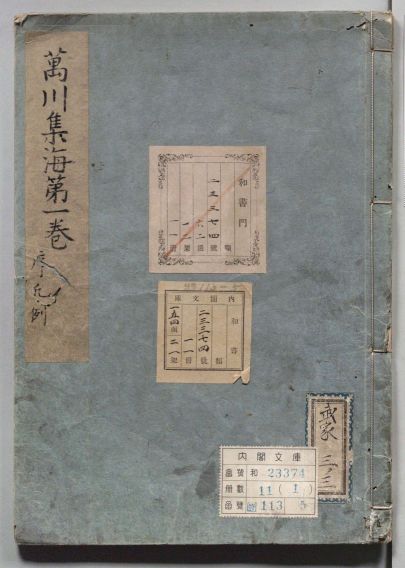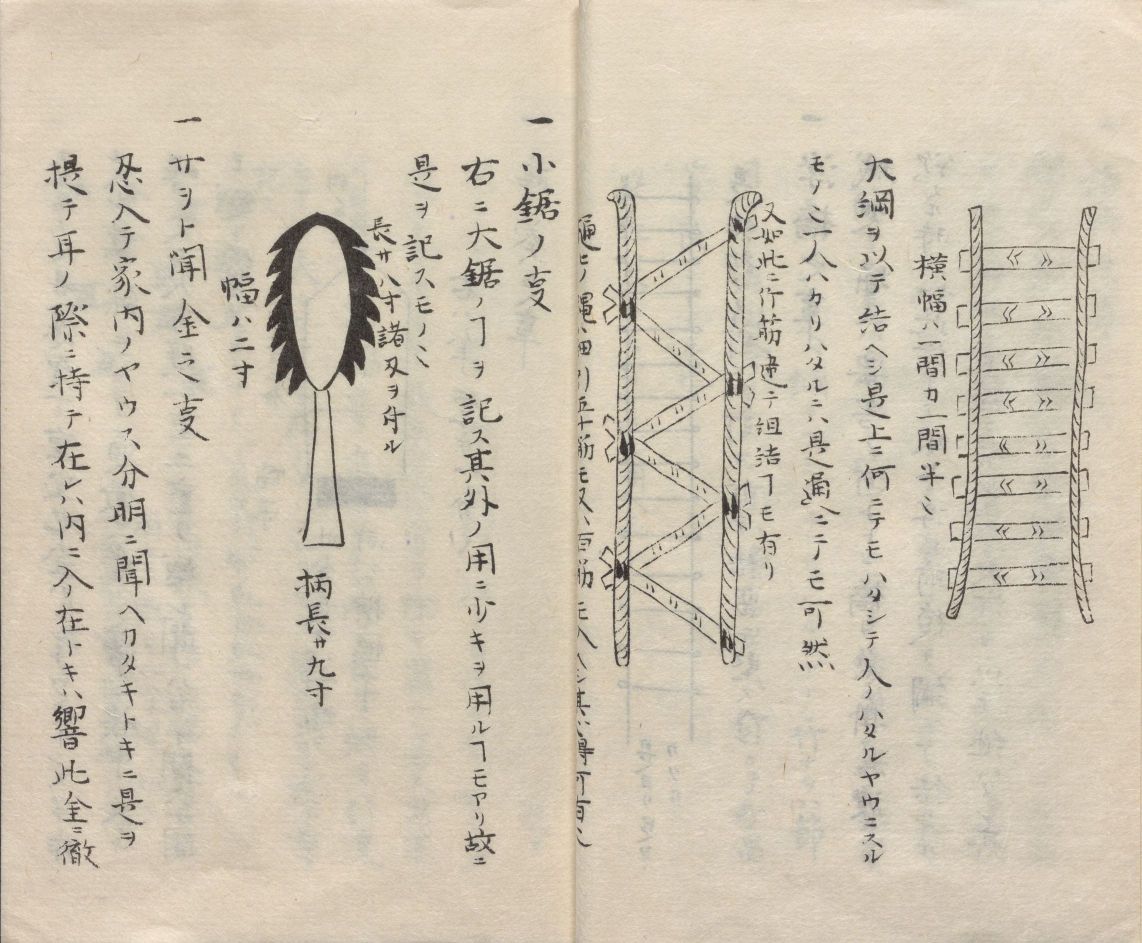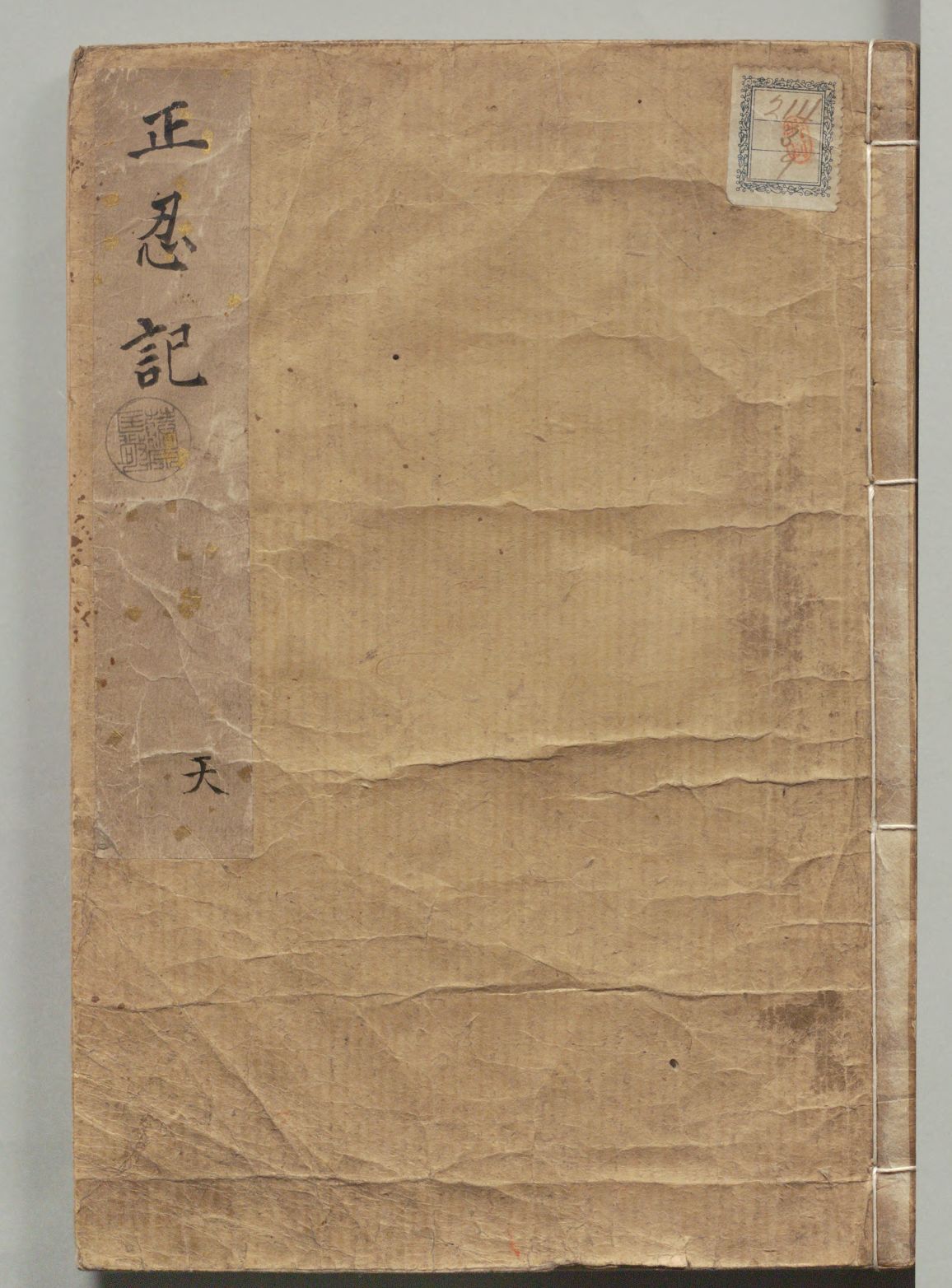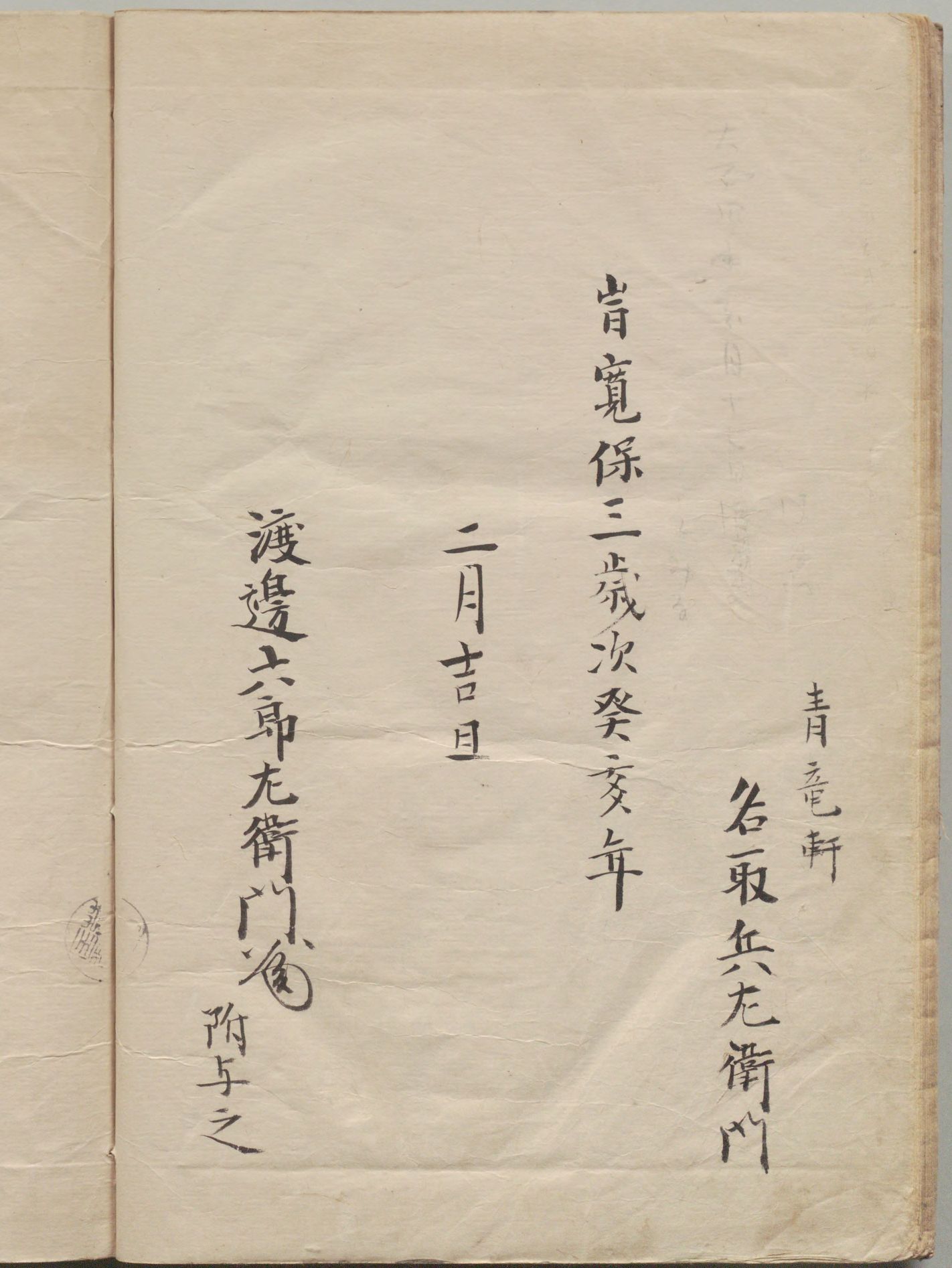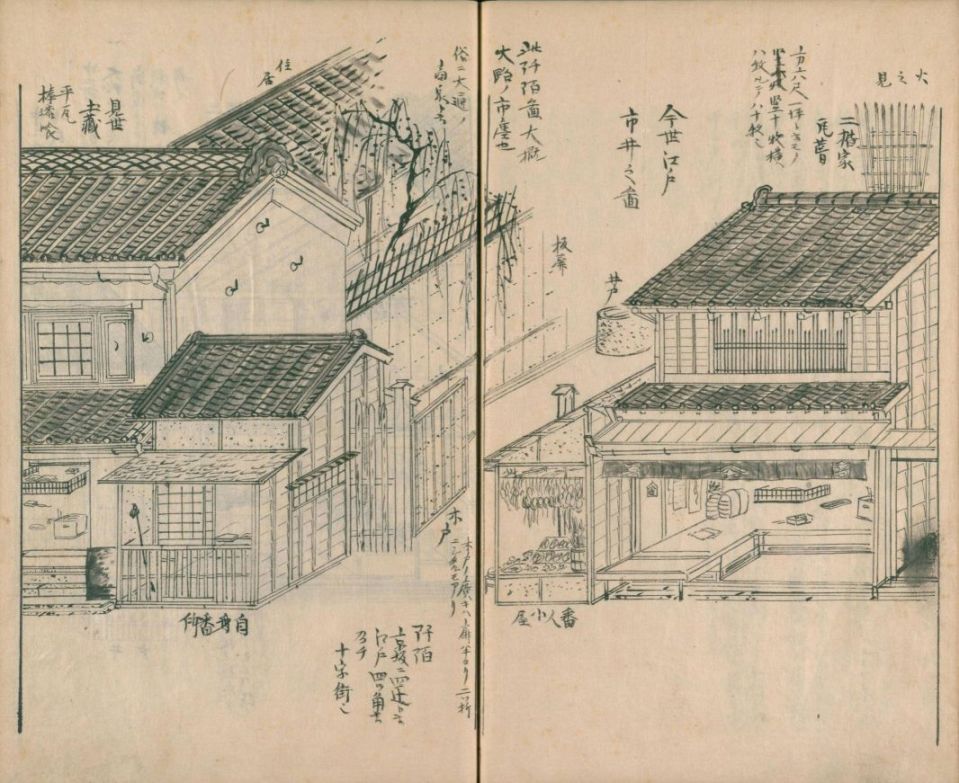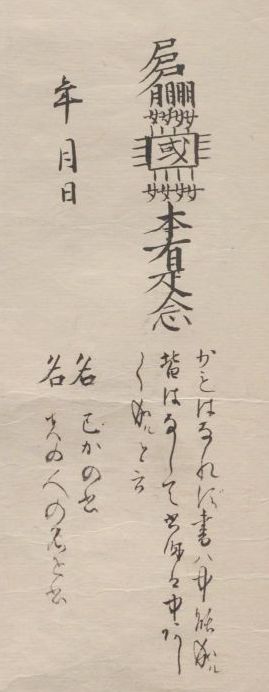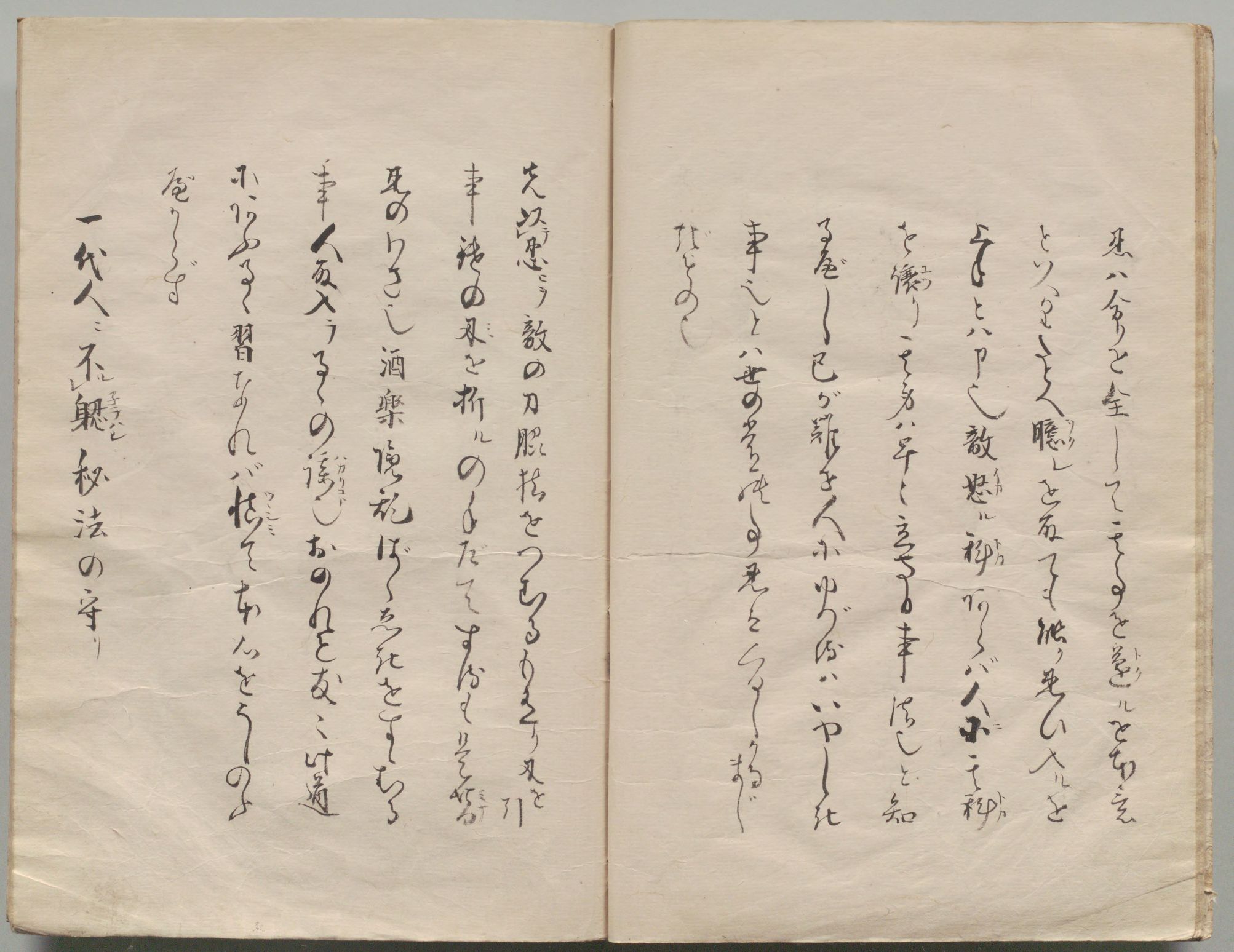- Kaleidoscope of Books
- NINJA: In Fiction and in Reality
- Secret Scroll: Let's read ninjutsu books!
Secret Scroll: Let's read ninjutsu books!
You guys are finally here, the final stage! Here, I'm gonna show my favorite bestsellers, three major ninjutsu books, especially to you! You have to pay special attention to Shōninki because the National Diet Library preserves and displays one of the handwritten copies of it to the public.
As the world became more peaceful during the Edo period (1603-1867), there were few opportunities for ninja to use ninjutsu. Therefore, it is believed that ninja decided to write books to pass on their ninjutsu and secrets. Some military books written in the Middle Ages also describe techniques that are connected to the workings of shinobi. However, they contained strong magical elements, such as forming seals. On the other hand, ninjutsu books of the Edo period describe the history of ninja, the ninja way of life, ninja techniques, usage of ninja weapons, methods of reading minds, and so on.
In this chapter, we will introduce the three major ninjutsu books, Bansenshūkai, Ninpiden, and Shōninki.
Bansenshūkai, an encyclopedia of ninjutsu
Bansenshūkai is said to be the largest ninjutsu book in terms of quality and volume. It is a 22-volume compilation of secret ninjutsu from the Iga and Koga schools, as well as techniques from various other schools. The title of the book means that it is like a wide ocean with many rivers gathered together. It was written by a ninja, FUJIBAYASHI Yasutake, in 1676. Bansenshūkai says Yasutake was from Koga. However, because his ancestors' memorial pagodas are located in Iga, it seems like that he was actually from Iga. At any rate, Iga and Koga were called "the one country of Koga and Iga" at the time, and it is believed that the boundaries between the two areas were not clearly defined in terms of lifestyle and politics.
It is noteworthy that Bansenshūkai refers to The Art of War by Sun Tzu, China's oldest book on military strategy, many times. Yasutake looked to Sun Tzu to explain the importance of ninjas in battles. The Art of War says that it is important to defeat the enemy without fighting, and that intelligence is necessary for this. It also introduces the term "seishin (righteousness of heart)" and explains the importance of having a righteous heart and valuing humanity, justice, and loyalty. Bansenshūkai demonstrated the necessity of ninja through The Art of War and emphasized the moral character of ninja through the word "seishin." In doing so, he may have been trying to convey the importance of ninja under the Edo shogunate. In fact, in 1854, Koga samurai presented a copy of Bansenshūkai to the shogunate when complaining of their plight.
Practical! Ninpiden
Bansenshūkai and Shoninki, which will be introduced next, contain general instructional parts. On the other hand, Ninpiden consists of only specific explanations of ninjutsu. Even though Ninpiden is not as prestigious as Bansenshūkai, it is a practical and simple ninjutsu book that teaches specific techniques. There is a description of its origins, stating that HATTORI Yasunaga and HATTORI Masanaga handed down the teachings, and HATTORI Minobe Saburo and others collected them into a book in 1655, but it is unclear whether or not this is true. However, it is certain that Ninpiden is a ninjutsu book that emphasizes and references the HATTORI Hanzō style of ninjutsu.
Get close to somebody you like by using ninjutsu? The world of Shōninki
Shōninki was written in 1681 by NATORI Masazumi, one of the military scholars hired by TOKUGAWA Yorinobu, the first lord of the Kishu Domain. The Natori family was originally from Kai Province (present-day Yamanashi Prefecture), and Masazumi was familiar with the Koshu school of military science (Koshu is another name for Kai). In addition, Masazumi studied various schools of military theory, including the Kusunoki school, and created the Shin Kusunoki school (New Kusunoki school).
The original Shōninki written by Masazumi has not been found, but several manuscripts remain. The National Diet Library preserves one of these manuscripts and makes it open to the public. The colophon states that NATORI Hyōzaemon gave it to WATANABE Rokurozaemon in 1743.
Shōninki is considered to be one of the most intellectual and prestigious ninjutsu books. It is composed of three volumes: the first volume deals with ninja techniques, the second volume deals with how to handle the surrounding environment, including people's minds, and the final volume describes the profound secrets of the ninja mind. Ninja fans are probably familiar with the "six essential ninja tools" that a ninja should always carry (amigasa-wide brimmed straw hat, kaginawa-grappling hook, sekihitsu-slate pencil, kusuri-medicine, sanjaku tenugui-a 114 centimeter long towel, tsukedake-tool for starting fires) and shichihode, the seven ninja disguise styles (see "Ninja outfits" in the third scroll). They were introduced in the Shōninki.
Below are some of the interesting techniques in the Shōninki. Maybe you can use them in your daily life...just maybe!
Winning hearts and minds! How to sneak into a mansion
An Edo period store in Morisada mankō, an encyclopedic essay about daily life between 1838 and 1853. A ninja may have tried to sneak into such buildings.
First, sit down in front of the house pretending to be sick and order your servant to ask the people in the house for water or medicine. The sickness should be a sudden illness such as diarrhea or sunstroke. Drunkenness is not a suitable fake illness. Say thank you politely and leave the house. Go back a few days later and thank them with a gift, while praising them profusely. It is best to compliment their children. You should give the present to the wife, or as a second choice, to the master's favorite servant. This way, the master will be happy and more likely to talk to you at ease.
This technique looks cunning at a first glance but shows the severity and delicacy of ninjas' work.
You can get close to somebody you like♡ Ninja talismans
Shōninki introduces five talismans. The purposes of the spells are, for example, to prevent enemies from targeting you, to prevent you from being wounded in battle, and to improve or worsen your relationships with others. On the talismans, there is a place to write your name and the other person's name, and it is said that if you write the names close to each other, you will get along better, and if you write them far apart, you will get along worse.
However, it does not seem that the author really believed in magic, and he wrote that it is ignorant to expect it to have an effect, but also that there is no reason to not use them, so you should consider whether to use these spells or not according to the situation at hand.
This talisman is like the love umbrella (a popular Japansese charm in which you write your own name and someone else's name under a drawing of an umbrella to grow closer to each other). I tried it once before… the result is a secret! You guys should try it too.
Think outside the box, be yourself!
Part of "A lesson in enemy prevention" in the second volume. It contains ninja maxims, such as not to lose oneself in pleasure.
It is stated that it is important for a ninja to risk his life to achieve his goals. Even if you are responsible for something and someone gets angry, you should shift the blame onto others and try to escape as quickly as you can. The concept that shifting the blame is wrong is general ethics, but a ninja doesn't need to worry about that. In order to make someone let down their guard, ninja should make use of liquor, women, or gambling. However, the ninja must not lose themself in pleasure.
Putting aside the morals of modern society, ninja were not bound by common sense and strove not to lose sight of themselves. The way of life of a ninja is really cool, don't you think?

Next
Epilogue
Riddle Solution Scroll


